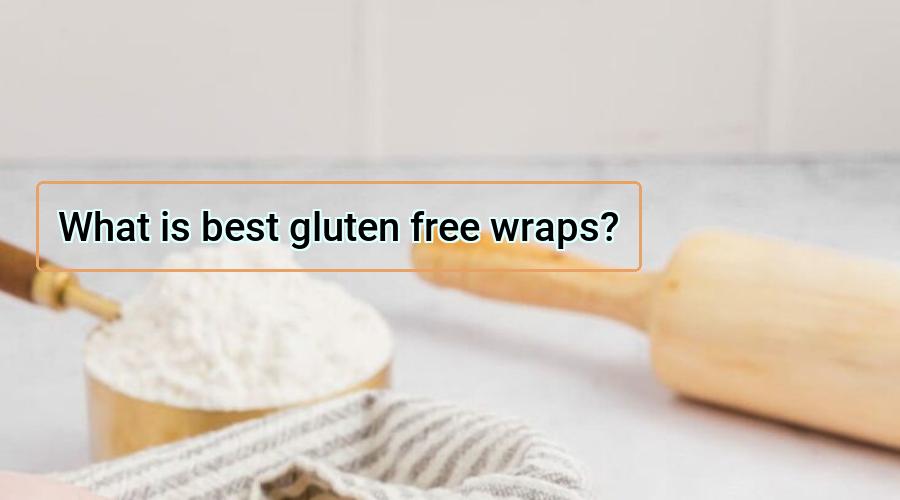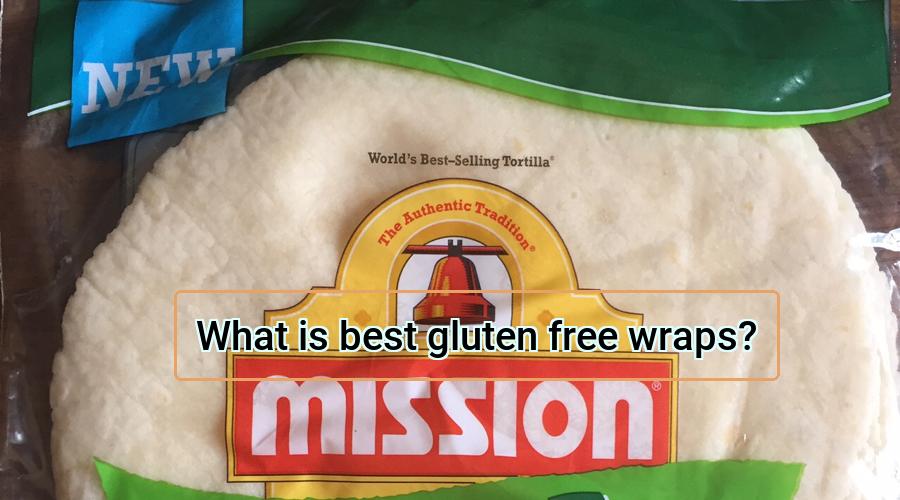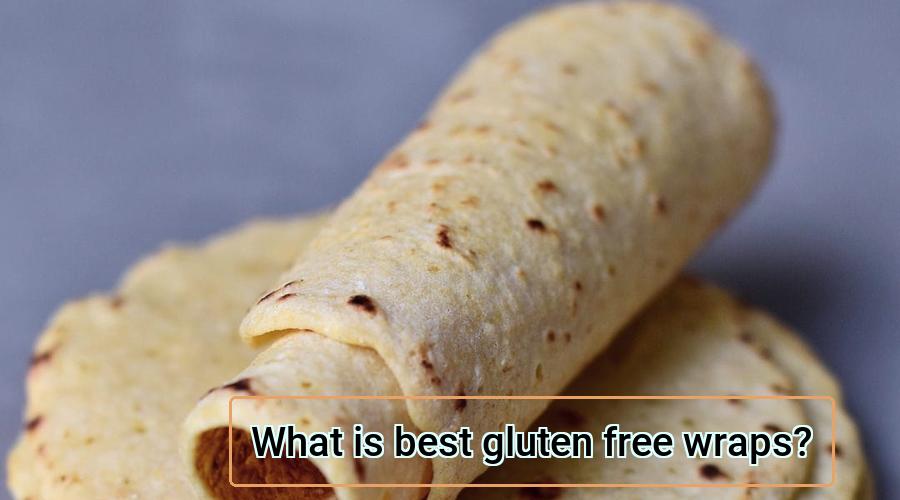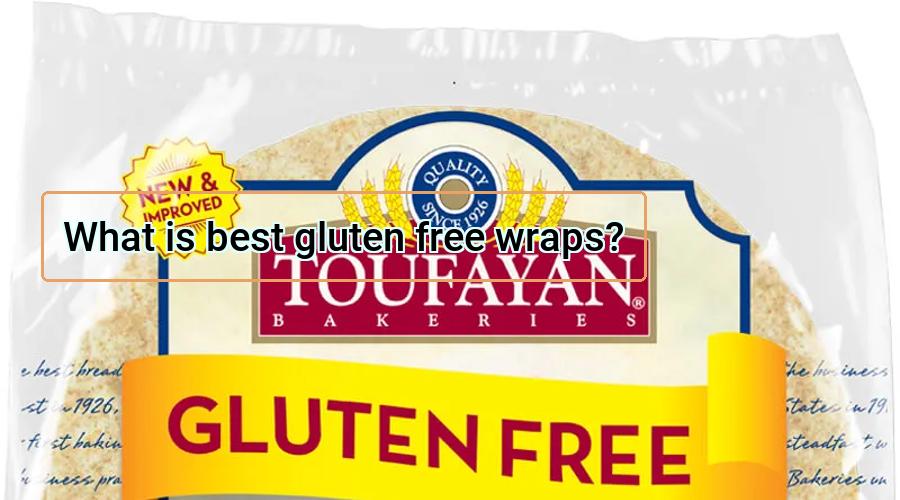Gluten free wraps can be a great alternative for those that suffer from sensitivities to gluten, or are looking to reduce their gluten intake. For those on the hunt for the best of the best, it’s important to know what benefits each option brings. Whether looking for a wrap that is low calorie and high fiber or something with plenty of protein, there are plenty of options out there.
When searching for the perfect gluten-free wrap, one should look for ones made from natural ingredients and without any added preservatives or artificial ingredients. Wheat-free wraps made with whole grains such as quinoa and oats are ideal sources of complex carbohydrates while also providing essential vitamins and minerals. Another key factor when choosing a gluten free wrap is whether it has been certified by third party organizations like Celiac Sprue Association (CSA) or Gluten Intolerance Group (GIG).
Most of the ingredients in a gluten free wrap
Gluten free wraps have become increasingly popular in recent years as the number of people who suffer from gluten sensitivities continues to rise. Not only are these wraps delicious and nutritious, but they are also made with a variety of ingredients that make them safe for those on a gluten-free diet. While each wrap may vary slightly depending on the recipe, there are some common components that make up a typical gluten free wrap.

One of the main ingredients used in traditional gluten free wraps is rice flour or cornstarch. This provides the wrap with its necessary texture and consistency to be rolled easily without breaking apart. Many recipes will also use tapioca starch or buckwheat flour to give it an extra crunchy texture and boost its nutritional content.
The benefits of a gluten free wrap
Gluten free wraps are becoming increasingly popular for those who suffer from gluten intolerance or celiac disease. Gluten-free wraps provide a delicious and nutritious alternative to standard breads, offering an array of health benefits. Not only are they packed with essential vitamins and minerals, but they also provide a low-carbohydrate option for those looking to control their calorie intake.
For those who have food sensitivities, gluten free wraps can be a great way to enjoy healthy meals without worrying about potential reactions caused by common allergens. By replacing traditional wheat-based products with gluten free alternatives, individuals can significantly reduce their risk of experiencing adverse effects such as bloating and digestive issues. Additionally, consuming these types of foods is beneficial for managing blood sugar levels as they often contain fewer carbohydrates than other breads and snacks.

This makes a product gluten-free
What does it mean for a product to be gluten-free? For many people, this is an important distinction when considering what products to purchase. Gluten-free foods are those that have been specially prepared in order to reduce or eliminate the presence of gluten proteins, which can cause digestive issues and other health problems for some individuals.
The process of making a product gluten-free involves careful monitoring from production through packaging and distribution. This includes testing ingredients and production processes regularly to ensure no cross contamination with wheat, rye, or barley takes place. Ingredients used must also be carefully vetted as they can contain hidden sources of gluten. Processes such as milling and distillation may be used to remove the gluten proteins present in certain grains like wheat flour making them safe for consumption by those who require a gluten-free diet.

About of celiac disease
Celiac disease, an autoimmune disorder that affects the digestive system, is an increasingly common condition in both children and adults. People with celiac disease can’t digest gluten, which is a protein found in wheat, rye, and barley. When someone with celiac disease eats foods containing gluten, their immune system reacts by damaging the small intestine and interferes with nutrient absorption from food. This damage can lead to malnutrition as well as other health problems such as osteoporosis or anemia.
The only way for people who have been diagnosed with celiac disease to manage it is to follow a strict gluten-free diet for life.
There are tips of gluten-free wraps
Gluten-free wraps are an excellent way to enjoy a variety of meals. Whether you have Celiac Disease or just want to avoid gluten, there are many delicious options for creating a quick and healthy meal with gluten-free wraps. From store-bought varieties to homemade recipes, here are some tips on making the perfect gluten-free wrap.

When shopping for store-bought wraps, make sure to check the label carefully – not all “gluten-free” labeled products are actually free of wheat and other grains that contain gluten. There are also several specialty brands that produce certified gluten-free wraps in a variety of flavors such as almond flour and coconut flour tortillas.
If you’re feeling adventurous, you can also make your own homemade wrap using flours like chickpea flour or even oat flour.
Sandwich wraps are gluten-free
A sandwich wrap is a great choice for those looking to enjoy a meal packed with flavor, yet gluten-free. Gluten-free wraps are becoming increasingly popular due to the rise in awareness of celiac disease and other gluten-related sensitivities. Not only are these wraps delicious, but they can also be easily customized to fit any nutritional needs or dietary preferences.
Sandwich wraps offer an alternative to traditional breads, such as wheat and rye; instead of using processed grains, most wraps use healthier ingredients like corn, flax seed, quinoa, or even lettuce leaves as the base ingredient. Many stores now carry pre-made gluten-free wraps that can be ready in minutes for those on the go. Additionally, there are many recipes available online for those who want to make their own wrap at home.
How do I make a gluten free wrap?
Do you want to make a tasty, gluten free wrap? Eating gluten-free doesn’t mean sacrificing flavor or texture. With just a few simple ingredients and steps, you can create your own delicious wrap that everyone in the family will enjoy. In this article, we’ll provide an easy-to-follow guide on how to make the perfect gluten free wrap from start to finish. You’ll learn the ingredients needed and get some helpful tips along the way to ensure a successful experience.
Is gluten-free wraps good for you?
As more people become aware of their health and food choices, the gluten-free lifestyle has become increasingly popular. Gluten-free wraps are a great alternative for those looking to avoid wheat, rye and other grains containing gluten. But what exactly are these wraps made of and are they actually healthier than regular wheat wraps? To answer this question, it is important to understand what gluten-free wraps are and the potential benefits and drawbacks of consuming them.
Is tortilla wraps gluten-free?
Tortilla wraps have become a go-to staple in many people’s diets, whether it’s for a quick snack or meal on the go. But many people with gluten sensitivities may be wondering if they can still enjoy them. So, is tortilla wraps gluten-free? This article will delve into the ingredients of tortilla wraps and provide insight into their nutritional content to help you make an informed decision about whether they fit into your diet.

